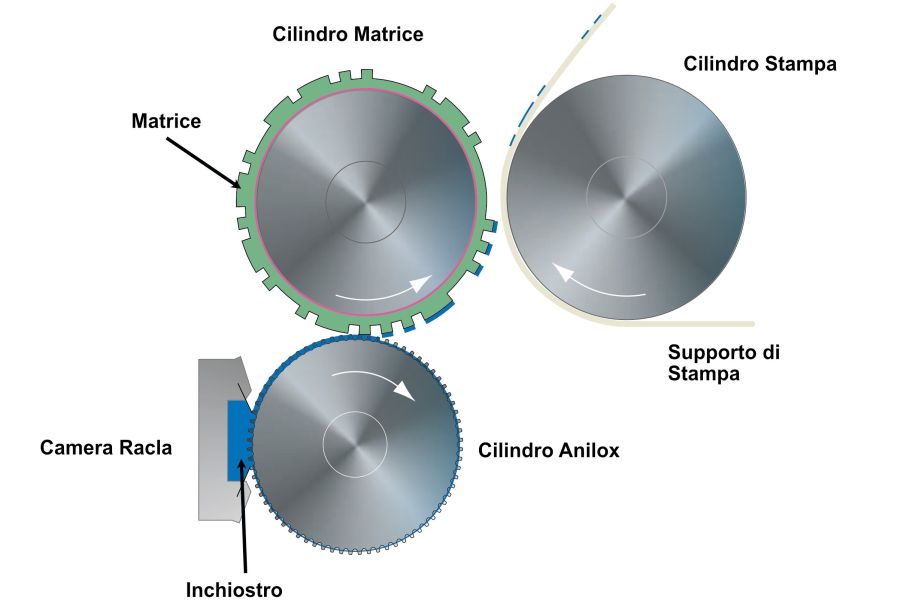It is used for printing flexible packaging, plastic films, laminates, foil, paper and board.
Technological improvements have allowed Flexography to reach a level of quality comparable to other processes such as offset and rotogravure. Today, Flexo printing is possible in wide web widths and speeds of 500 m/min or more.
There are two types of press for flexo printing, CI and stack. CI (Central Impression) has a very large CI drum which the web passes around. The flexographic plates pick up the ink from an engraved anilox roller which transfers it to the web in the correct colour sequence.
A stack press has individual printing units and impression cylinders for each colour and so is useful for reverse printing (both sides of the web).
A booster corona treatment before print can be beneficial for plastic films which have already been treated at extrusion (as they have lost dyne rate over time).
The corona treatment unit is usually mounted before the infeed to the printing section of the press to treat the material before it reaches the printing units.
The treatment increases the surface tension of the material being processed, allowing the ink to remain firmly anchored when dried.

The choice of corona treater
For the installation of a corona treater on a Flexo press, the following factors should be considered:
- type of material to be treated (plastic or metallised)
- printing width
- speed
- power
- dyne rate required
- one or two sided treatment
- suitable electrodes to optimise printing process.